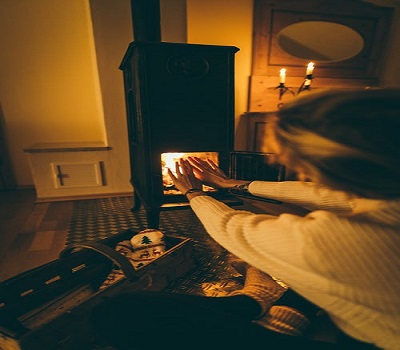As the temperature drops outside, we want to ensure our homes are as warm as possible. A staggering percentage of our household energy output is swallowed by heating the home. Implementing some measures to ensure you are efficiently insulating your home will help lower heating bills and support our collective carbon commitments. In the following post we are going to offer cost effective ideas for keeping your home warm this winter.
Ensure Your Radiators Are Working Correctly
If we made a list of how we heat our homes, radiators would be very high up on that list. Radiators are one of the first lines of defence in the home against the cold. Therefore, making sure they are working correctly is vitally important. The tell-tale signs that your radiators may not be reaching their full potential include:
- Cold patches at the top
- Taking longer than usual to heat up
- Strange noises (gurgling, gulping)
If this is the case, you may need to bleed your radiators. Bleeding your radiators will release trapped air inside the heating system, ensuring warm water can properly circulate. There are a number of handy guides online on how to bleed your radiators (see here). Radiators that are operating at 100% will help you heat your home more efficiently and, most importantly, reduce energy bills.
Consider Purchasing Radiator Reflectors
If you have radiators in your home that are on exposed walls, you could benefit from radiator reflectors. The principle behind radiator reflectors is a rather simple one. Radiators produce heat that is directed into the room and the wall behind them. By installing reflectors, you are redirecting the heat that is lost through the wall. This low cost insulating solution allows you to hold onto the warmth produced in your home.
Make The Most of Your Curtains
Some of the best types of home insulation can also be the cheapest. Using curtains as an insulation tool is very easy and can be done at little cost. The key is to keep them open during the day and closed during the night. This way, sunlight can heat your home and heat is unable to escape through your windows at night. You may also want to ensure your curtains are adequately sized. Gaps or leaks will ultimately give heat the opportunity to escape. By providing an insulating barrier between your home and your windows, curtains create an environment that is heated efficiently.
Check In on Your Boiler
Just like your home’s radiators, the boiler is a tool at the forefront of heating your home efficiently. For the most part boilers have a long life expectancy and only require yearly maintenance. Still, things do go wrong and you will want to check in on your boiler every now and then. If your boiler is 10 years old, or more, it may be time to replace it. GK Plumbing offer expert advice on boilers and maintenance for customers based in and around Aylesbury. Their services extend to customers in Buckinghamshire, Oxford and Milton Keynes.
Ensure Your Loft Is Insulated
This tip is perhaps not as cost effective as other mentions in the list. It is worth highlighting, however, that heating your home efficiently will reduce energy bills. The initial investment in home insulation measures may therefore be recouped by this bill reduction. A significant amount of heat in the home can be lost through the roof. Ensuring your loft is properly insulated will help trap heat and reduce heat loss. This can also be extended to your walls. A substantial amount of heat can be lost through your walls if your home has cavity walls. We could talk at length about the benefits of insulating cavity walls. Simply put, similarly to a properly insulated loft, an adequately insulated cavity wall will help you retain heat in the home and reduce energy bills.
Invest In Draught Excluders
Draught excluders are a simple way to keep your home warmer and, ultimately, save you money. They are placed at the bottom of doors and by windows to eliminate the travel of cold air. Incorporating draught excluders in your home, particularly in the winter months, can go a long way in keeping rooms warm. They also come in a variety of styles so can be easily integrated into your home’s design scheme.
Use Your Boiler’s Timer
Having the boiler working constantly will certainly ensure your home is warm during the winter. However, by doing this you are likely to multiply your energy bill. If you are out of the house during the day, this is also an inefficient way to heat your home. Using your boiler’s timer will ensure your home is warm, when needed, without the large bill you will receive by having it working consistently.







